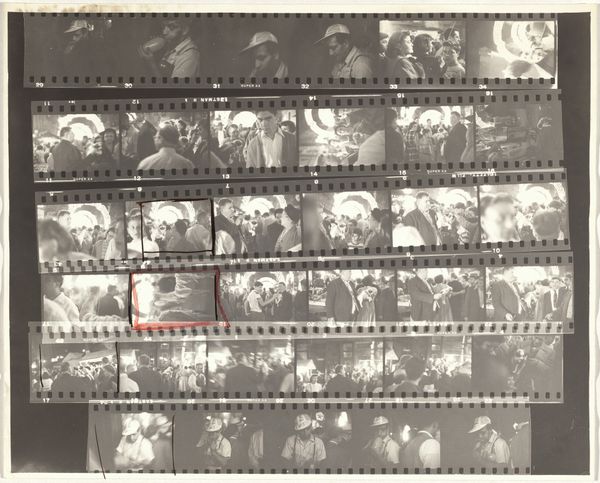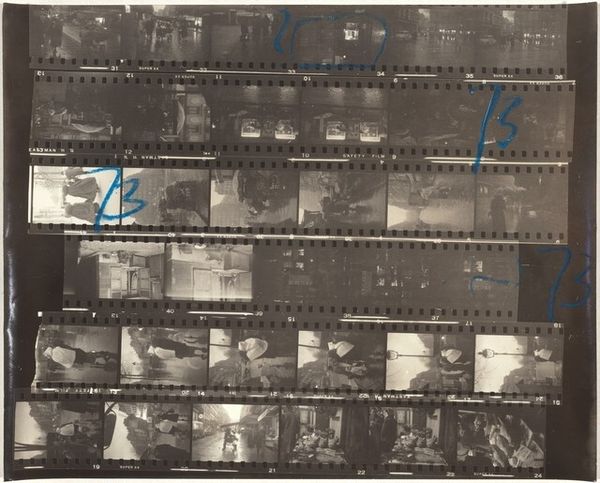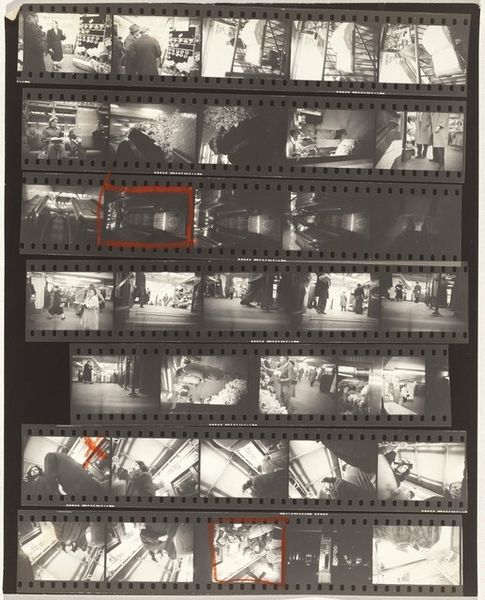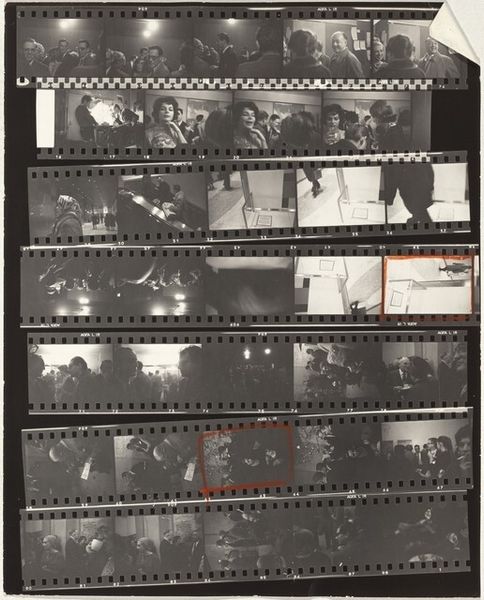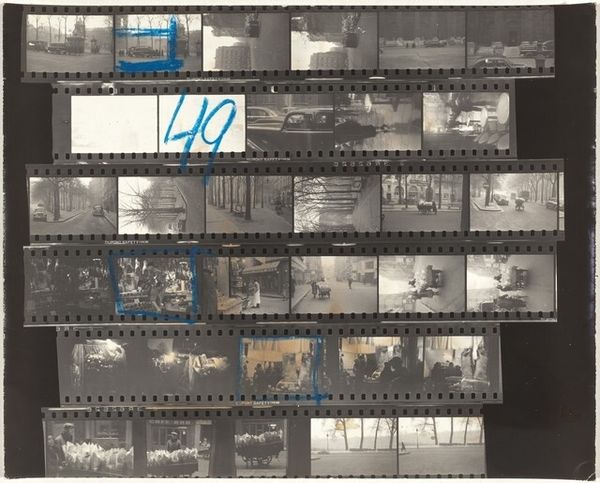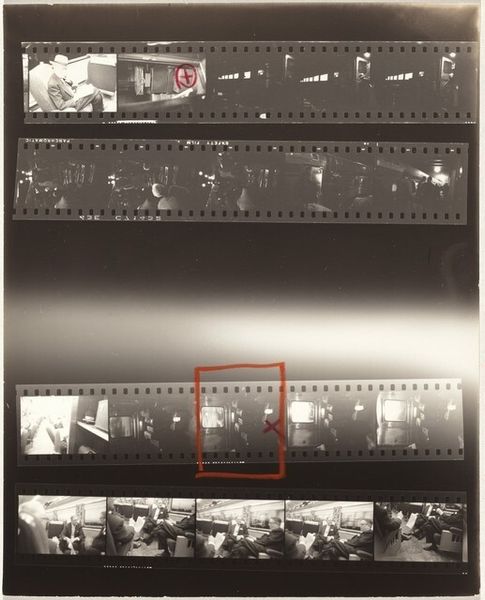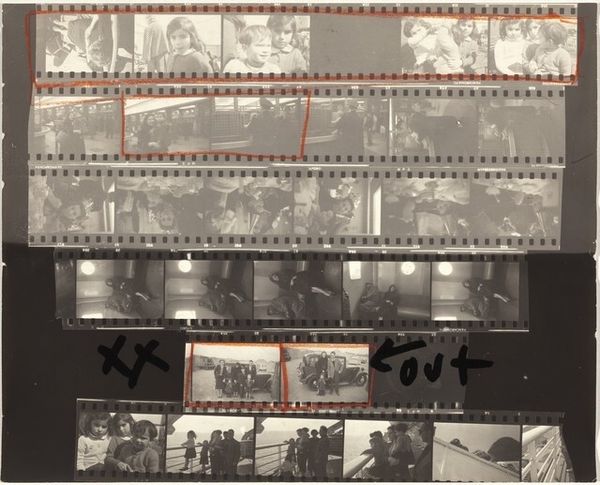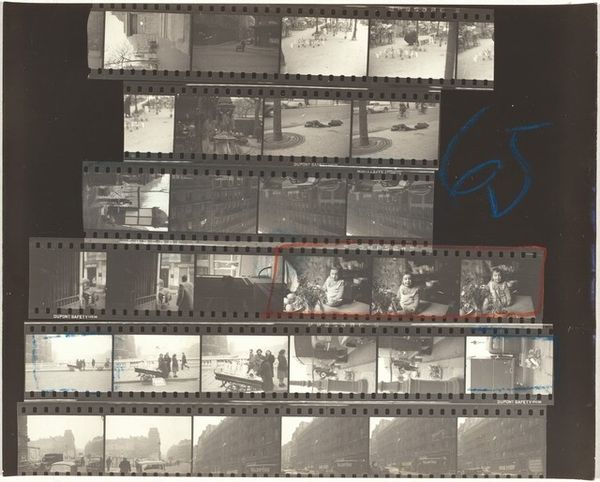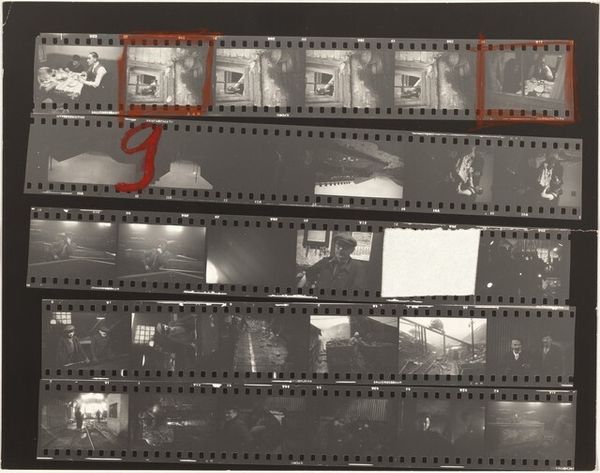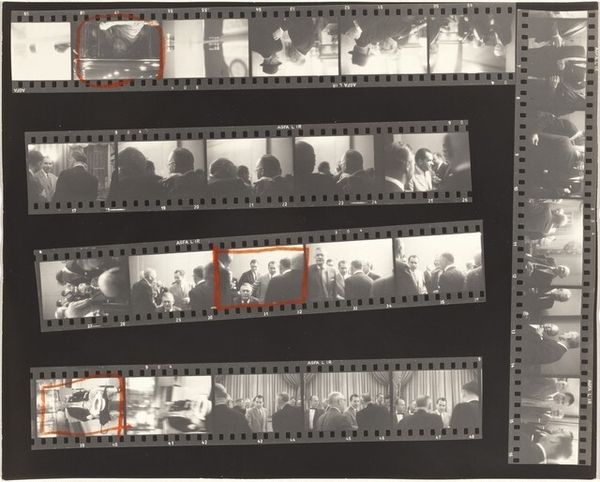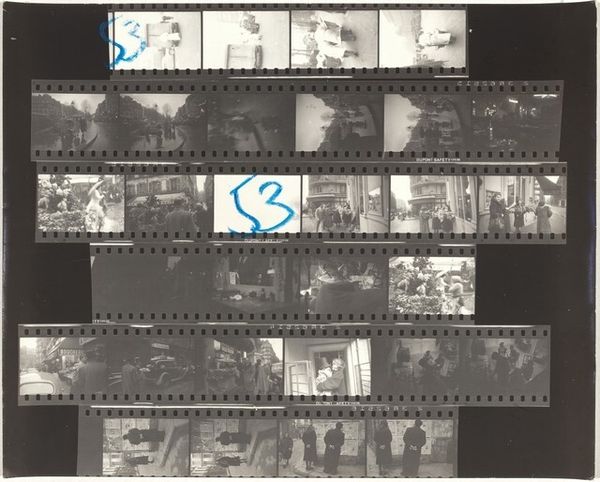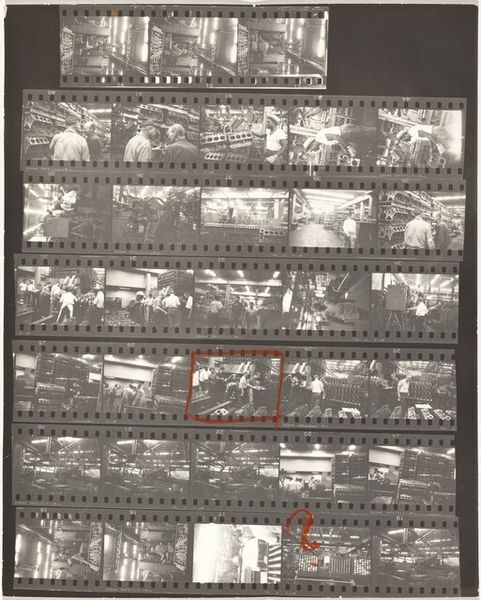
photography, gelatin-silver-print
#
street-photography
#
photography
#
gelatin-silver-print
#
cityscape
#
modernism
Dimensions: overall: 20.2 x 25.2 cm (7 15/16 x 9 15/16 in.)
Copyright: National Gallery of Art: CC0 1.0
Editor: Here we have Robert Frank’s "Paris 51B", a gelatin silver print from 1951-1952. The image is of several film strips, and it gives such an interesting glimpse into Frank's photographic process, especially with the markings on the strips. I am really curious how this relates to Frank’s wider artistic vision. How do you interpret this work in relation to its historical context? Curator: Well, seen through a historical lens, "Paris 51B" offers more than just a peek into Frank's workflow; it reflects the socio-political currents of post-war Europe. The presentation of the film strip as the artwork itself challenges the traditional notion of a ‘finished’ photograph. Consider how museums and galleries usually present photography; carefully selected images, beautifully printed and framed. Editor: Right, it’s so raw in comparison. Almost anti-establishment. Curator: Exactly! It's a deliberate unmasking. We are shown the selection process. The blue and red markings aren't accidental; they signify a dialogue, a decision-making process that typically remains hidden. What do you think that reveals about Frank's relationship to his subject matter and audience? Editor: I guess it humanizes the artistic process, doesn't it? Showing the messy reality behind the final, polished product. The street scenes themselves seem very candid too, capturing fleeting moments of everyday life in Paris. Curator: Precisely. Frank, through this presentation, invites us to question the curated reality often presented by institutions. How complicit are museums in shaping our understanding of photography and history itself? Are they offering truth or just one version of it? Editor: That's a perspective I hadn't fully considered. So, the photograph itself, and its presentation, become a commentary on the role of art institutions and the power they wield. Curator: Precisely. It encourages critical engagement with the images we consume and the systems that present them. Hopefully our discussion helps underscore that intent.
Comments
No comments
Be the first to comment and join the conversation on the ultimate creative platform.
